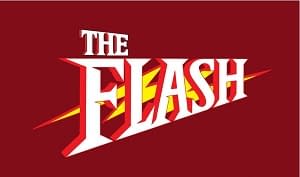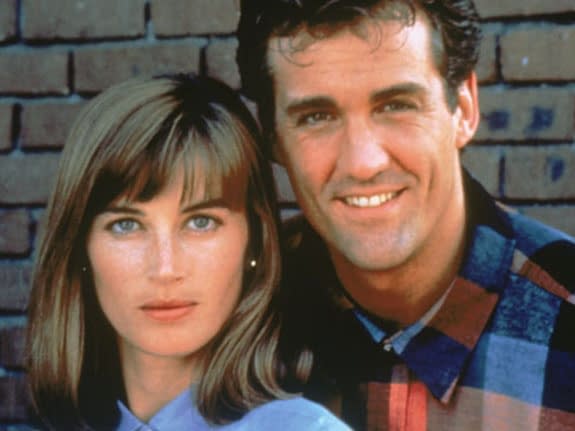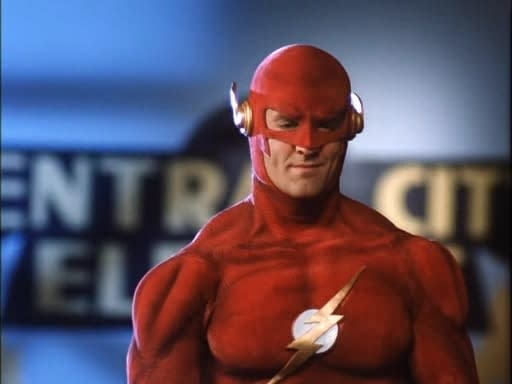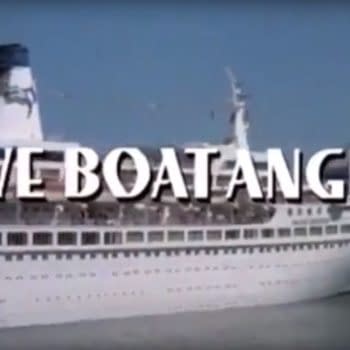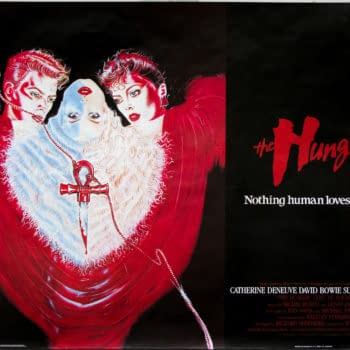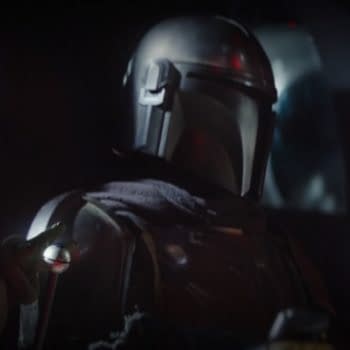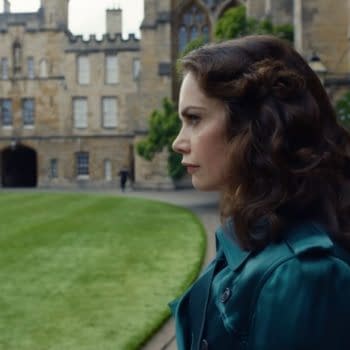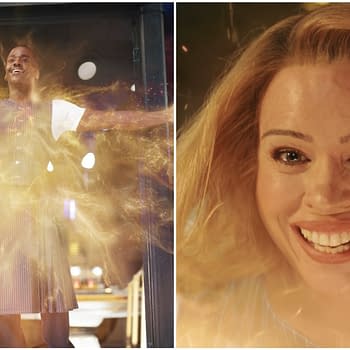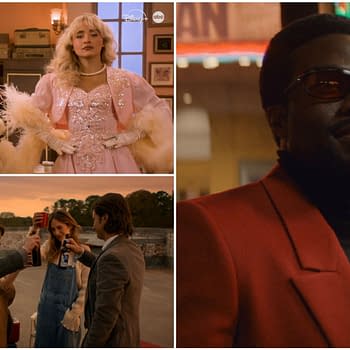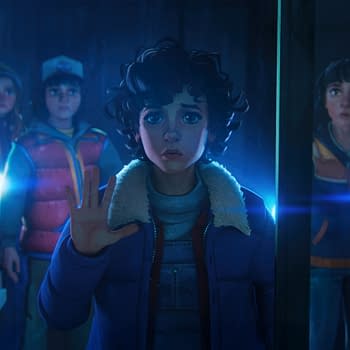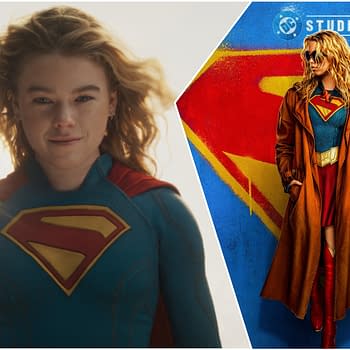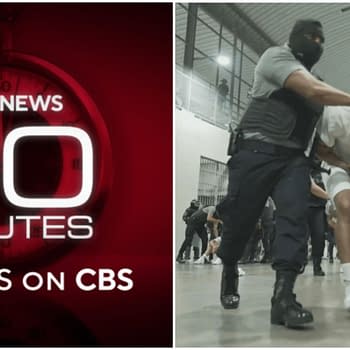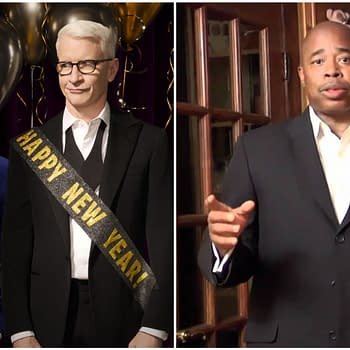Posted in: CW, Trailer, TV | Tagged: Amanda Pays, arrow, arrowverse, bleeding cool, cable, comic books, Comics, cw, dc, dc comics, elseworlds, flash, mark hamill, Speed Force, streaming, supergirl, television, The Flash, The Flash 1990, trickster, tv
1990's The Flash: A Look Back Through the Speed Force (Arrowverse "Elseworlds")
The camera moves across a battlefield during the opening moments of theArrowverse "Elseworlds" crossover episode of The Flash. There are bodies littering the blasted landscape, with one crimson clad figure struggling to face his adversary. He looks like Barry Allen's dad, but the costume he's wearing is distinctive in its red and gold motif. It's clearly The Flash, and while a lot of viewers may have wondered why a different actor was wearing the speed-suit, quite a few of us were thrilled. This was our Flash, and it's been a long, long time since we last saw our hero.
On September 20th of 1990, The Flash, one of the most ambitious genre television projects ever attempted at that time, debuted on the CBS television network. The show featured Daytime Emmy-Award winner John Wesley Shipp as Barry Allen, a forensic scientist who gains stupendous super powers in a lab accident. The Flash also starred British actress Amanda Pays as Tina McGee, a scientist who helps Barry learn to control his powers. The show was campy, thrilling, occasionally insipid, and way ahead of its time.
The original 1990 version of The Flash began production in 1988, when Warner Brothers Entertainment began looking for a home on television for some of their lesser known super-heroes. Producers Danny Bilson and Paul De Meo pitched The Flash to CBS in 1990, and the show began production in earnest in May of that same year. The pilot episode took six weeks to shoot, with a price tag of over $6 million. The special effects for the show were so cutting edge for the time that they were barely finished a week before the show debuted in the Fall 1990. The total price tag of the pilot alone was considered enormously expensive at the time; in comparison, an average episode of Star Trek: Discovery costs around $8 million to make.
The pilot episode of The Flash contained over 125 special effects shots, which was nearly unheard of on television at the time, especially in that era of pre-digital effects. The Flash's costume was also revolutionary, constructed by Stan Winston Studios from full body molds of Shipp. The mandate to the costumers was tricky: they needed to construct a costume that was faithful to the comic book look of The Flash, and needed to afford Shipp his entire range of motion. It had only been a year since Michael Keaton's Batman, and the restricted movement of Keaton's bat-suit was very apparent. That couldn't be a factor on a show with a character who needed to be believably capable of running at fast speeds! Four total suits were made for the show, at a pricetag of $100,000.
Fresh off the success of the 1989 Tim Burton Batman movie, Danny Elfman was brought in to compose the theme for, which helped usher in a wave of Elfman-themed genre productions including Batman: The Animated Series, Men in Black, and Sam Raimi's Spider-Man movies.
Perhaps the biggest impact The Flash had wasn't seen – or should we say heard – for another two years, though. In the 12th episode 'The Trickster,' Star Wars veteran Mark Hamill guest stars as James Jesse, a pyschopathic serial killer who dresses up in a neon harlequin suit and menaces Central City as The Trickster. Hamill attacked the role with relish, and was brought back for the final episode of the series, 'The Trial of the Trickster.' Hamill went on to voice The Joker two years later in 1992's Batman: The Animated Series, a performance still considered to this day to be the preeminent interpretation of "The Clown Prince of Crime."
Very few of The Flash's comic book "rogues gallery" would make it onto the CBS show, with David Cassidy portraying the villainous Mirror Master and Michael Champion playing Captain Cold in a single episode. Most of the other villains that appeared on the show were created exclusively for the program.
Sadly, The Flash wasn't long for the world – lasting a single, 22-episode season. Initially, The Flash was set to air against The Simpsons and The Cosby Show on Thursday nights – but it never had a chance to wrestle viewers away from either program. Ultimately hobbled with a dreaded Saturday night "death slot," The Flash aired it's final episode 'The Trial of the Trickster' in May 1991. Shipp went on to other television projects, such as Dawson's Creek and MTV's Teen Wolf; while Pays would have roles on series such as The X-Files, Nip/Tuck, and Psych.
Both actors would appear in the CW's 2014 version of The Flash: Shipp as Barry Allen's (Grant Gustin) father Henry, who was falsely accused of murdering his wife; and Pays as an alternate version of McGee from the 1990's series. Even Hamill returned, several times as James Jesse and as the alternate Earth 3 version of The Trickster.
The 2010 Scarlet Speedster has been very good to Shipp: along with playing Henry Allen, he's also stepped into the role of Jay Garrick, the Flash of Earth 3. But it's the current Arrowverse "Elseworlds" crossover event that gave us the Shipp we were hoping for: Barry Allen of Earth-90…my Flash, back again in the iconic red and gold.
Both the suit and the man have aged well – great to see them together again.


